HTC turns 20: two decades of headline hits and flagship flops
How does HTC's squeezable present compare to its past?
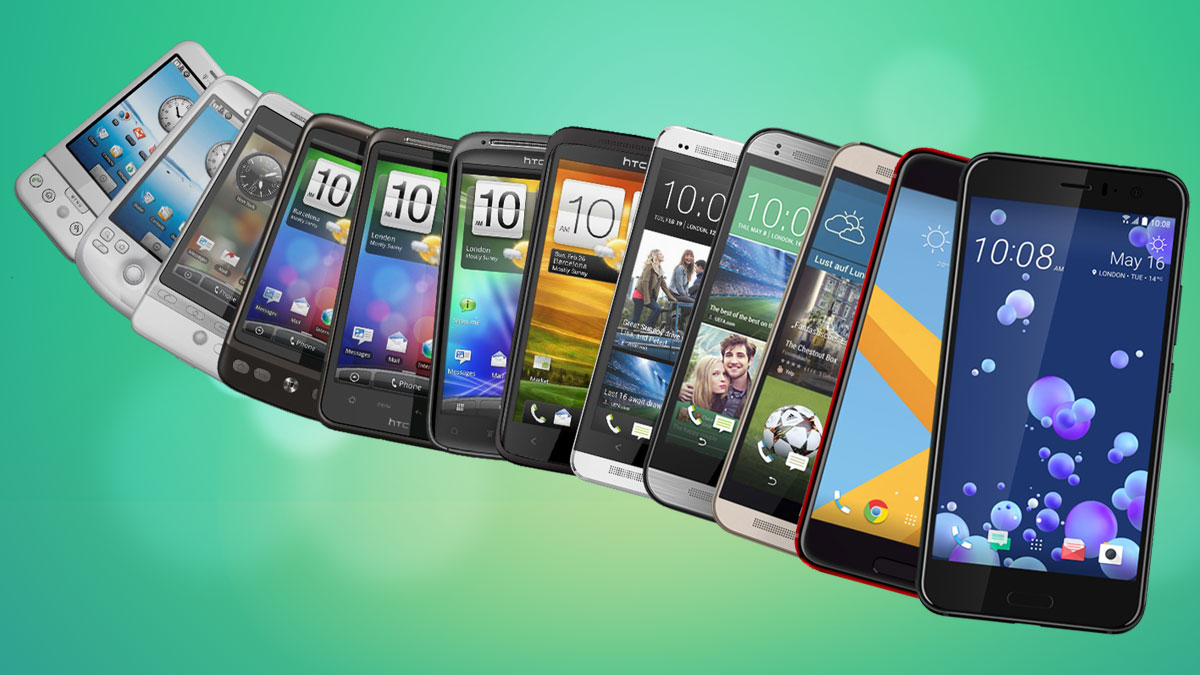
Turning 20
This year is HTC's 20th birthday, and the company is celebrating it how a smartphone maker should - with the launch of a brand new range of phones.
That started with the HTC U Ultra and HTC U Play in January, but it's only now, with the launch of the HTC U11, that we're getting the real flagship of the range.
With sales dwindling in the face of competition from Apple and Samsung, it's the company's most important phone in years. It needs to be a success, and with a huge power boost and an innovative new Edge Sense feature it might just stand a chance.
This is HTC's eleventh true Android flagship, and the company has come a long way since its 1997 birth.
We've charted that journey, noting the company's Android adventures, Windows Phone detours and 3D misfires along the way.
From the runaway hits of the Desire and Desire HD to the classy but niche HTC One (M7), it's been a tumultuous ride for the manufacturer.
Take a trip down memory lane with us as we remember how HTC got to where it is today. There's no mention of Robert Downey Jr., we promise.
- Read our hands on: HTC U11 review
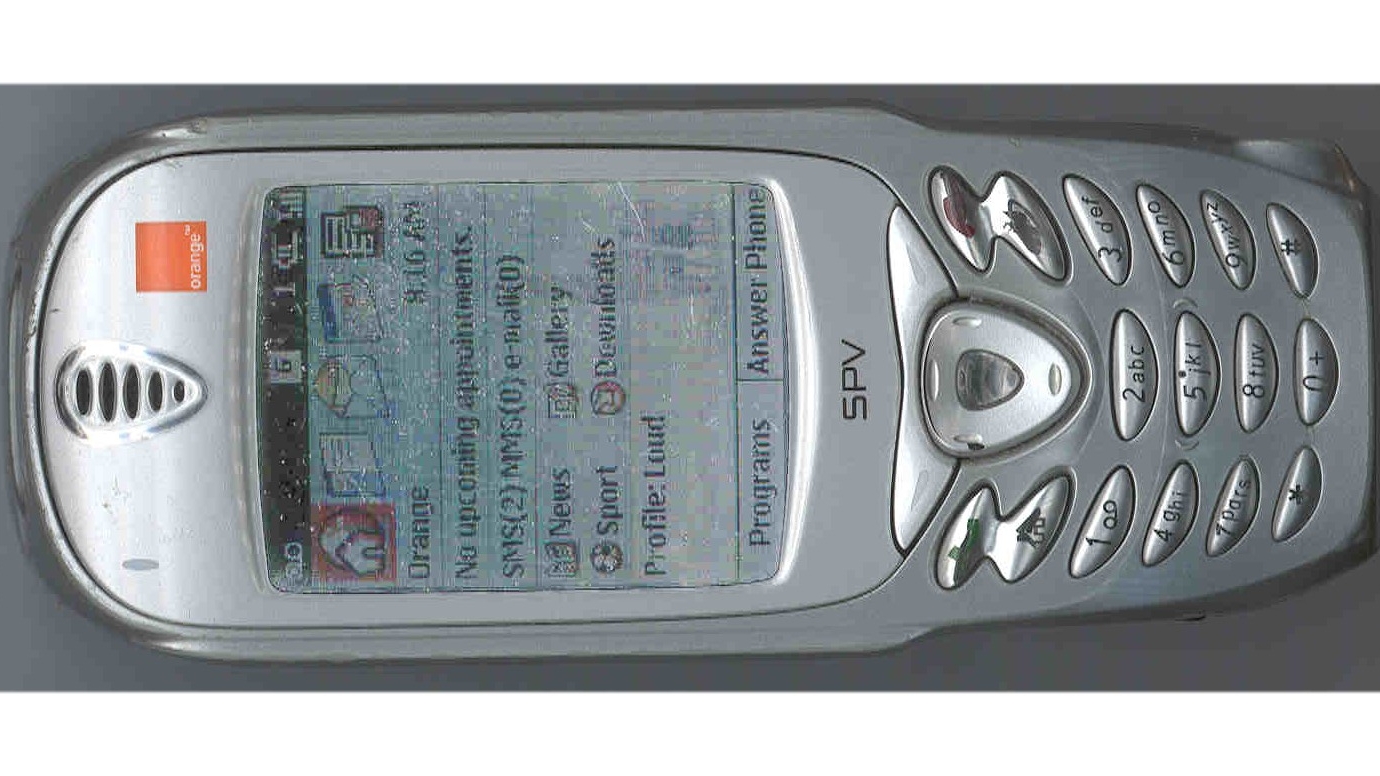
Orange SPV Classic
Date of launch: November 2002 | Dimensions: 115 x 46 x 22mm | Weight: 127g | Screen: 176 x 220 pixels | Launch OS: Windows Mobile | CPU and RAM: Single-core 132MHz, 16MB RAM | Camera: N/A
Launched in November 2002, the Orange SPV Classic was one of HTC’s first phones, and the first ‘smartphone’ by any manufacturer to run Windows Mobile 2002.
Standing for ‘Sound, Pictures, Video’ the SPV Classic was focused on media, which is something we’ve continued to see on HTC phones over the years.
By modern standards the SPV Classic would be a feature phone at best, with access to the likes of a web browser, email and calendar, but little else. There was no Wi-Fi, no Bluetooth and not even a camera, while its small TFT screen was just 176 x 220, which was actually pretty good for the time.
And the phone seemingly did well for HTC, as the company followed it up with more than a dozen other SPV handsets over the next 5 years.
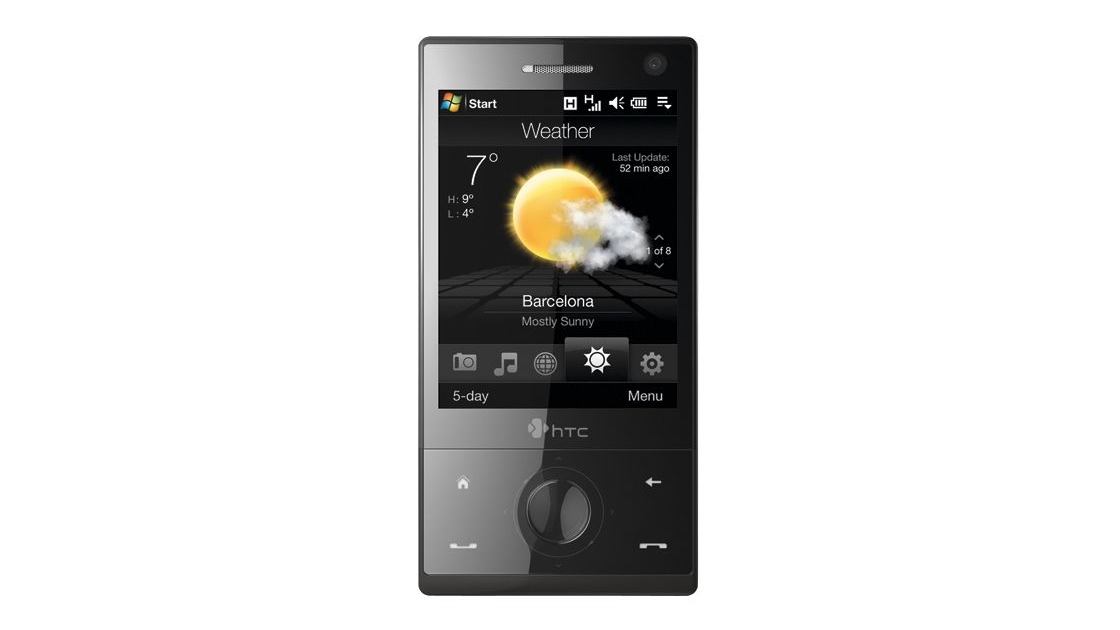
HTC Touch Diamond
Date of launch: May 2008 | Dimensions: 102 x 51 x 11.5mm | Weight: 110g | Screen size: 2.8 inches, 480 x 640 pixels | Launch OS: Windows Mobile 6.1 Professional | CPU and RAM: Single-core 528MHz, 192MB RAM | Camera: 3.15MP
The HTC Touch Diamond was considered by some to be the closest thing Windows Mobile (in this case Windows Mobile 6.1) had to an iPhone killer.
Part of that was down to HTC’s intuitive TouchFLO 3D interface, which made its debut on the Touch Diamond, transforming the look and operation of Windows Mobile.
The Touch Diamond also had an attractive plastic build and with its 528MHz chipset and 192MB of RAM it felt speedy.
HTC followed it up with the HTC Touch Diamond 2 the following year, and it lived up to the promise of its predecessor.
In our review we called it “the best touchscreen phone since the Apple iPhone 3G,” praising its great 3.2-inch 480 x 800 screen and fantastic interface.
- Read our HTC Touch Diamond review
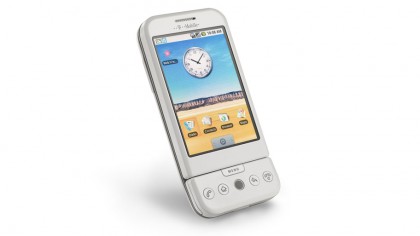
T-Mobile G1 / HTC Dream
Date of launch: October 2008 | Dimensions: 117mm x 55.7mm x 17.1mm | Weight: 158g | Screen size: 3.2 inches, 320 x 480 pixels | Launch OS: Android 1.0 | CPU and RAM: Single-core 528MHz, 192MB RAM | Camera: 3.15MP
HTC's earliest Android flagship was one of the first Android handsets to go on sale - remember that Google's operating system started a long way behind iOS, BlackBerry and even Windows Mobile. The general consensus was that this was a very good phone indeed, second only to the iPhone 3G in 2008.
Our review listed "an awful lot of reasons to get excited" about it - integrated GPS, the Google-powered mapping capabilities, the open Android Market and *ahem* its slide-out keyboard.
Google's Android was off to a flyer, and as TechRadar put it: "The G1 is a stellar phone and points to a future when a phone is as flexible and useful as the PC on your desk."
- Read our T-Mobile G1 review
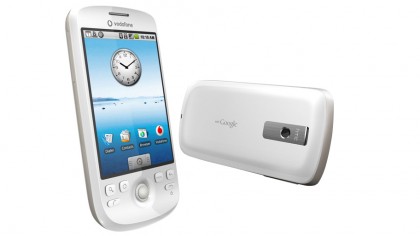
HTC Magic
Date of launch: May 2009 | Dimensions: 113mm x 55mm x 13.7mm | Weight: 118.5g | Screen size: 3.2 inches, 320 x 480 pixels | Launch OS: Android 1.5 Cupcake | CPU and RAM: Single-core 528MHz, 288MB RAM | Camera: 3.15MP
Half a year after the T-Mobile G1 arrived, HTC was back with another effort. Sporting very similar specs to its predecessor (though with a whopping 96MB of additional RAM), the Magic was a slimmer and lighter animal.
Its main purpose in existing seemed to be to ditch the slide-out keypad that the G1 had offered: Android was updated very frequently in the early days, and the freshly baked 1.5 Cupcake had an on-screen keyboard.
Our take on the handset mentioned the improved touchscreen, the increased quality of Google's own apps and the sleekness of the design. The iPhone 3GS appeared a month later, selling 1m units in three days. The HTC Magic took three months to reach the same number, but Android was on the march.
- Read our HTC Magic review
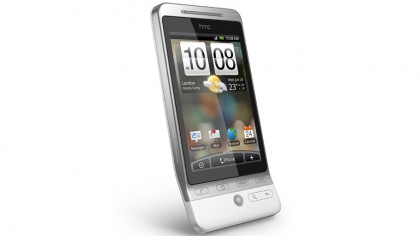
HTC Hero
Date of launch: July 2009 | Dimensions: 112mm x 56.2mm x 14.4mm | Weight: 135g | Screen size: 3.2 inches, 320 x 480 pixels | Launch OS: Android 1.5 Cupcake | CPU and RAM: Single-core 528MHz, 288MB RAM | Camera: 5MP
The HTC Hero was the first flagship device from the Taiwanese manufacturer to look something like the modern handsets we see today. That may be partly because it was the first phone to sport HTC's own Sense UI skin on top of Android.
Aside from the camera upgrade, the specs were again very similar to the company's earlier efforts, but multi-touch enabled pinching and zooming, while a standard 3.5mm audio jack finally found a place.
We concluded our 2009 review with the assessment that this was the best Android phone to hit the market yet. Even with the iPhone 3GS selling well, HTC's profits and market share rose significantly as the year drew to a close.
- Read our HTC Hero review
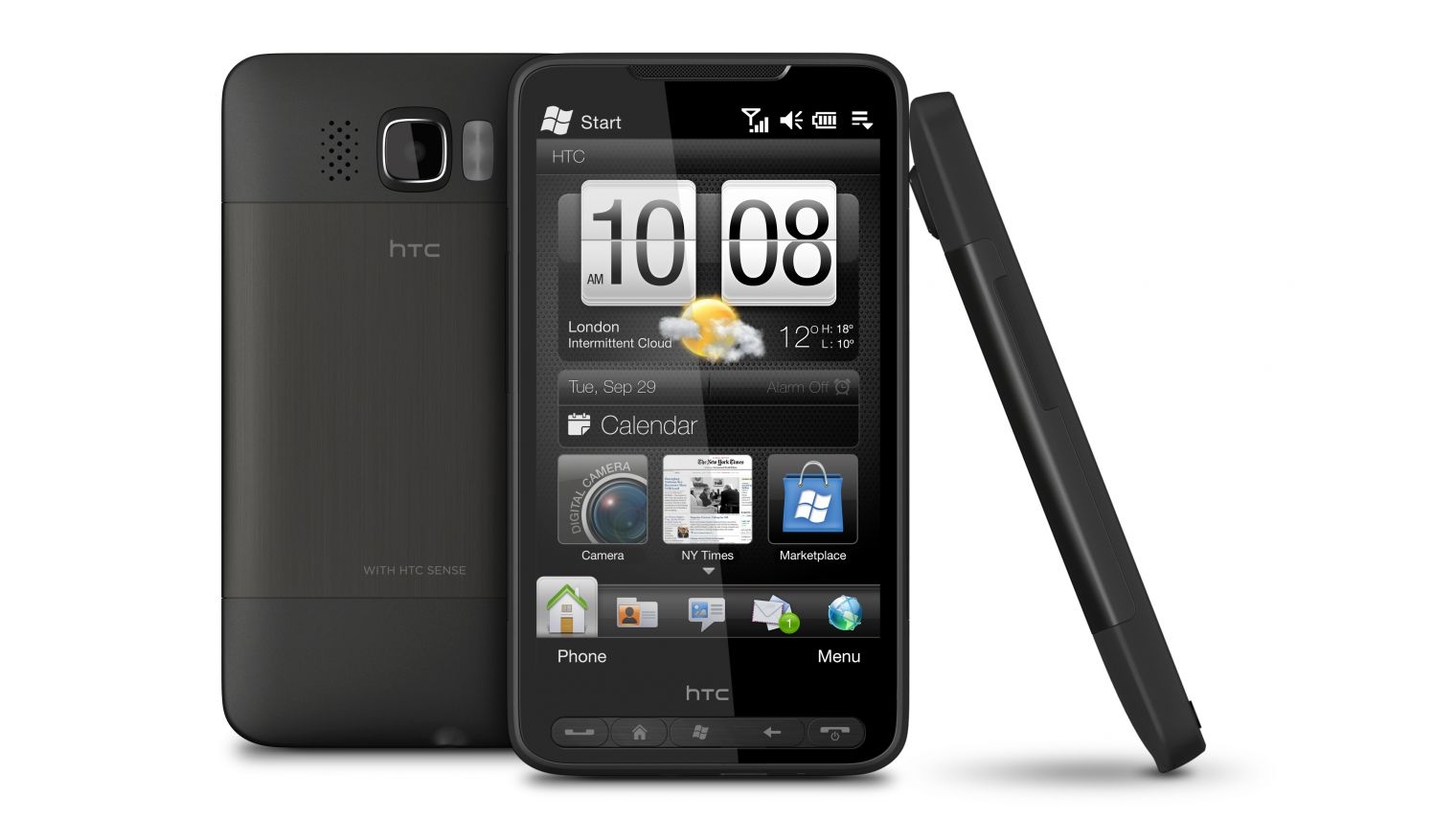
HTC HD2
Date of launch: November 2009 | Dimensions: 120.5 x 67 x 11mm | Weight: 157g | Screen size: 4.3 inches, 480 x 800 pixels | Launch OS: Windows Mobile 6.5 Professional | CPU and RAM: Single-core 1.0GHz, 448MB RAM | Camera: 5MP
At launch, the 4.3-inch screen of the HTC HD2 was the largest smartphone display in the world. It was also the first capacitive screen on a Windows Mobile device and the first time HTC used its Sense UI on a Windows Mobile handset.
It was also the first HTC phone with a dual-LED flash for the camera, and paired with a responsive screen and a fast (for the time) 1.0GHz chipset there was a lot to like here.
We concluded our review saying “The HTC HD2 smashes past the iPhone in terms of raw processing speed and the ability to handle Flash video. It dwarfs the Hero with a more responsive screen and its Wi-Fi routing ability too, and is far better than anything Samsung, LG or Nokia have come up with so far.”
And we weren’t alone in liking it. The phone quickly sold out on most networks and still had a fanbase six years later, with one developer taking the time to unofficially get Android running on it.
- Read our HTC HD2 review
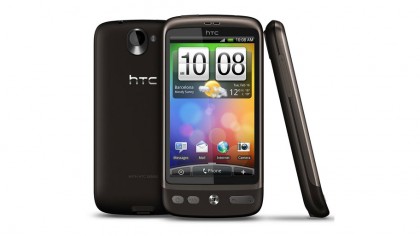
HTC Desire
Date of launch: March 2010 | Dimensions: 119mm x 60mm x 11.9mm | Weight: 135g | Screen size: 3.7 inches, 480 x 800 pixels | Launch OS: Android 2.1 Eclair | CPU and RAM: Single-core 1GHz, 588MB RAM | Camera: 5MP
HTC's first flagship phone for 2010 was the HTC Desire, and it was responsible for tempting tech-savvy users away from Apple in significant numbers. In the reader survey that we ran on TechRadar at the time, 47 percent of iPhone owners said they were planning to switch to the Desire.
Its appeal was largely down to its powerful specs list, with the 1GHz CPU and 3.7-inch 480 x 800 screen putting it right at the cutting edge for spring 2010.
Videos and photos now looked half-decent on a mobile, while it was the first of HTC's phones to launch on a number of networks simultaneously — something that may have given it an edge over the Nexus One, which HTC was also manufacturing.
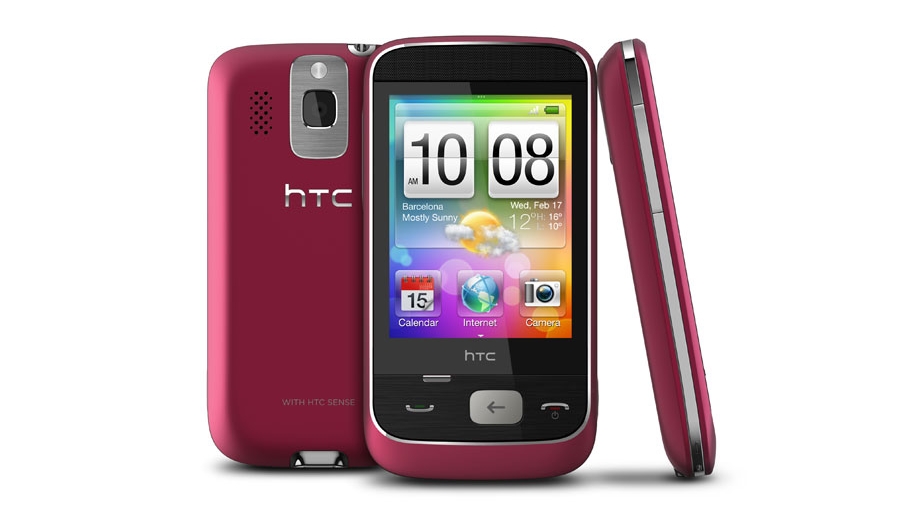
HTC Smart
Date of launch: March 2010 | Dimensions: 104 x 55 x 12.8mm | Weight: 108g | Screen size: 2.8 inches, 240 x 320 pixels | Launch OS: Qualcomm Brew | CPU and RAM: Single-core 300MHz, 256MB RAM | Camera: 3.15MP
Despite launching for just £100 (around $130/AU$175), the HTC Smart looked every bit a flagship, with chrome accents and a bright and vibrant 2.8-inch screen.
But the Smart was also unusual in that it ran Qualcomm’s Brew operating system. It was the first of HTC’s phones to do so, and the only time HTC experimented with Brew again was on the HTC Freestyle.
For better or worse, much of Brew’s design was hidden here by HTC’s Sense interface, but what HTC couldn’t hide was the lack of an app store. And that was only one of the Smart’s problems, as while it might have looked high-end, the low price was evident in its shutter lag, slow data speeds and low resolution screen.
We concluded our review saying: “There's no denying that the Smart looks good, but underneath that compact and attractive case, there simply isn't enough substance.”
- Read our HTC Smart review
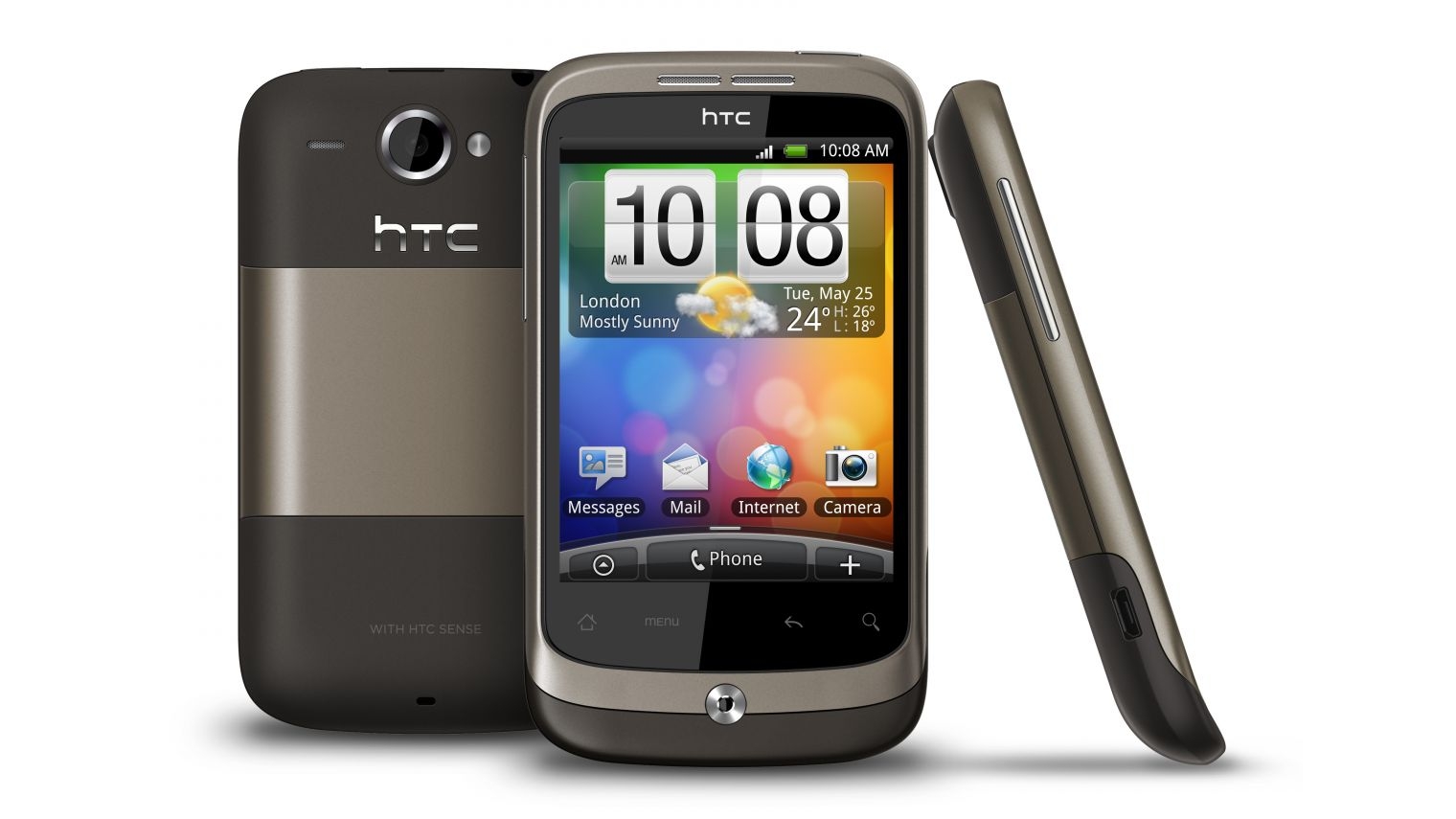
HTC Wildfire
Date of launch: June 2010 | Dimensions: 106.8 x 60.4 x 12mm | Weight: 118g | Screen size: 3.2 inches, 240 x 320 pixels | Launch OS: Android 2.1 Eclair | CPU and RAM: Single-core 528MHz, 384MB RAM | Camera: 5MP
These days you can get a lot of handset for not much money, but that wasn’t always the case, and the HTC Wildfire stood out as an early example of a low-cost handset done right.
It had a decent amount of power, an attractive, compact design and an LED flash alongside its 5MP camera (a feature that not so long ago you wouldn’t even have expected on a flagship).
That was enough for it to secure a four-star review from us, but a resolution of just 240 x 320 across its 3.2-inch screen wasn’t great even at the time, and kept it from getting that final star.
- Read our HTC Wildfire review
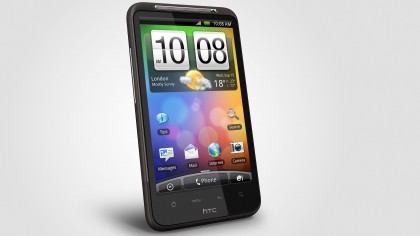
HTC Desire HD
Date of launch: October 2010 | Dimensions: 123mm x 68mm x 11.8mm | Weight: 164g | Screen size: 4.3 inches, 480 x 800 pixels | Launch OS: Android 2.2 Froyo | CPU and RAM: Single-core 1GHz, 768MB RAM | Camera: 8MP
Usually referred to as the big brother of the Desire, the HTC Desire HD helped to confirm 2010 as HTC's best year yet. Back at the start of the decade, you would've thought a 3.7-inch screen was too much, but the Desire HD upped this to a whopping 4.3 inches.
Other improvements included an 8MP camera and the latest 2.2 Froyo version of Android, but it had stiff competition in the form of the Samsung Galaxy S and the iPhone 4.
Our review of the phone was mostly positive, but dodgy battery life (thanks in part to that large screen) meant it wasn't an unqualified success. It certainly proved popular with punters, with several stores running out of stock in the first few months.
- Read our HTC Desire HD review

HTC HD7
Date of launch: October 2010 | Dimensions: 122 x 68 x 11.2mm | Weight: 162g | Screen size: 4.3 inches, 480 x 800 pixels | Launch OS: Windows Phone 7 | CPU and RAM: Single-core 1.0GHz, 576MB RAM | Camera: 12MP
One of the very first Windows Phone 7 handsets, the HTC HD7 was a media dream, with a 4.3-inch screen that back in 2010 we called “gargantuan”, along with a kickstand, stereo speakers and sound enhancements.
We awarded the phone 4 stars, with one of our few complaints being that it might be too large for some users – an idea which seems bizarre now, given how much phones have grown.
In all this year HTC would sell 24.6 million handsets – though good as the HD7 was, most of those sales were likely Android handsets, not Windows ones.
- Read our HTC HD7 review
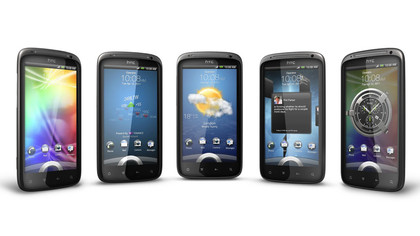
HTC Sensation
Date of launch: May 2011 | Dimensions: 126.1mm x 65.4mm x 11.3mm | Weight: 148g | Screen size: 4.3 inches, 540 x 960 pixels | Launch OS: Android 2.3.4 Gingerbread | CPU and RAM: Dual-core 1.2GHz processor, 768MB RAM | Camera: 8MP
HTC's "dual-core wonder" turned up in the summer of 2011, earning plaudits for its design and speed in our original review. With that dual-core 1.2GHz CPU, an impressive screen and 1080p video recording capabilities packed inside the 8MP camera, it was well equipped to take on the likes of the Samsung Galaxy S2, the LG Optimus 2X and the iPhone 4 (the 4S wouldn't appear until October).
The perennial battery life issue did take some of the shine off, and with Samsung upping its game, the HTC Sensation wasn't able to stand out in the way that its 2010 models had.
As usual, HTC remained tight-lipped over sales numbers, but it was the Galaxy S2 that nabbed the TechRadar phone of 2011 award.
- Read our HTC Sensation review
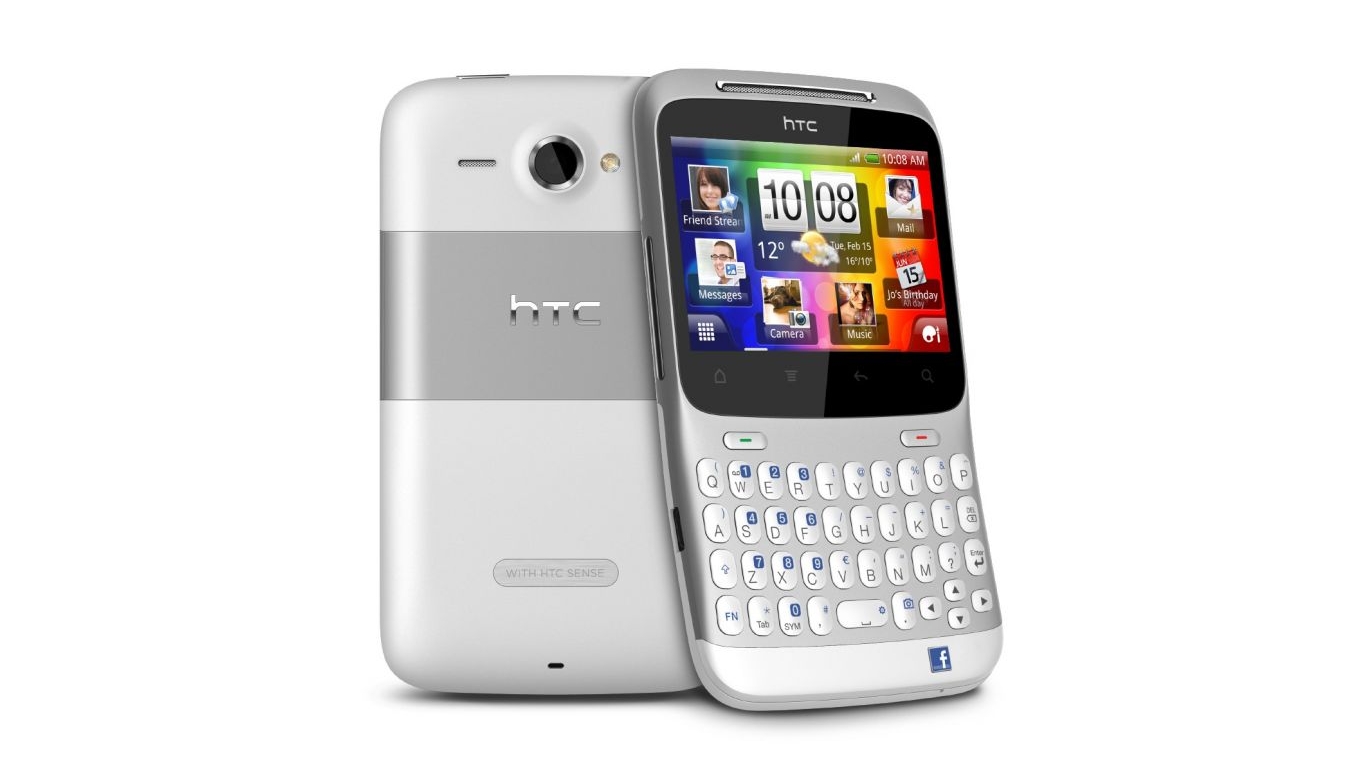
HTC ChaCha
Date of launch: June 2011 | Dimensions: 114.4 x 64.6 x 10.7mm | Weight: 120g | Screen size: 2.6 inches, 320 x 480 pixels | Launch OS: Android 2.3 Gingerbread | CPU and RAM: Single-core 800MHz, 512MB RAM | Camera: 5MP
For a long time, HTC’s Sense interface had Facebook deeply integrated into it, but with the HTC ChaCha it went a step further, offering a phone with a dedicated Facebook hardware button.
With a quality QWERTY keyboard too, the ChaCha was great for interacting with Facebook, and it also had a responsive – albeit small – 2.6-inch touchscreen and ran what was at the time the latest version of Android (2.3.3 Gingerbread).
The screen was a bit too small and the name was frankly bizarre, but all in all we were quite impressed with the phone, awarding it four stars.
And HTC wasn’t done with its Facebook experiment, following the ChaCha up with the HTC First – a handset which overlaid Android with the Facebook Home UI and became known as the Facebook phone, but struggled to sell.
- Read our HTC ChaCha review

HTC Evo 3D
Date of launch: July 2011 | Dimensions: 126 x 65 x 3.0 - 12.1mm | Weight: 170g | Screen size: 4.3 inches, 540 x 960 pixels | Launch OS: Android 2.3 Gingerbread | CPU and RAM: Dual-core 1.2GHz, 1GB RAM | Camera: 5MP
Following in the footsteps of the LG Optimus 3D, the HTC Evo 3D promised glasses-free 3D, a feature that’s as gimmicky as it sounds.
We complained in our review that headaches started after just 30 minutes, and while this needn’t have doomed the phone, as the core features could all be used in 2D, the fact that it was also a heavy, bulky phone with an underwhelming screen meant it never came recommended.
Perhaps wisely, HTC never made another 3D phone, with the entire concept losing favor even faster than the 3D film craze did.
- Read our HTC Evo 3D review
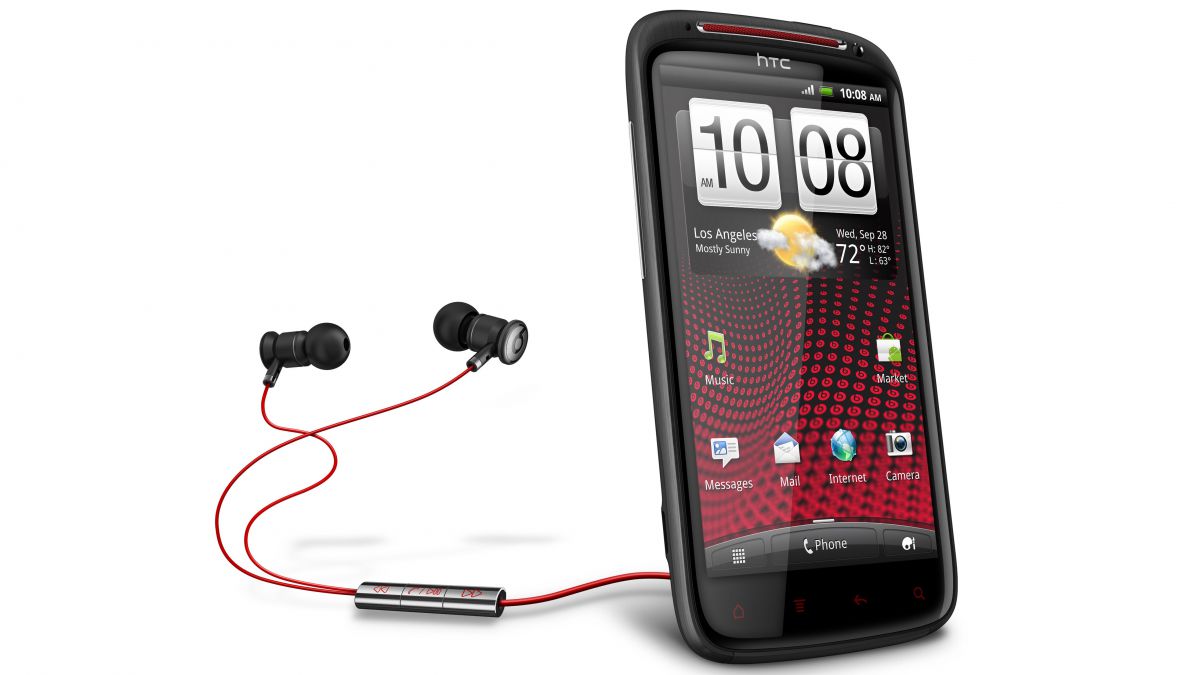
HTC Sensation XE
Date of launch: September 2011 | Dimensions: 126.1 x 65.4 x 11.3mm | Weight: 151g | Screen size: 4.3 inches, 540 x 960 pixels | Launch OS: Android 2.3.4 Gingerbread | CPU and RAM: Dual-core 1.5GHz, 768MB RAM | Camera: 8MP
Think Beats and you probably think Apple, but there was a time when HTC had a majority share in the audio company, and used its technology in a number of phones.
The HTC Sensation XE was the first of these, and HTC made sure everyone knew it, with Beats branding on the handset and a set of Beats by Dre earphones in the box.
It was more than just a marketing move though, with the Beats enhancements really making a difference, particularly to bass-heavy tracks.
Long-term this seemingly didn’t help the company sell phones, and HTC began selling off its Beats shares less than a year later, but at the time of the HTC Sensation XE’s launch, HTC was riding high, selling more phones in the US than any other company according to Canalys.
- Read our HTC Sensation XE review
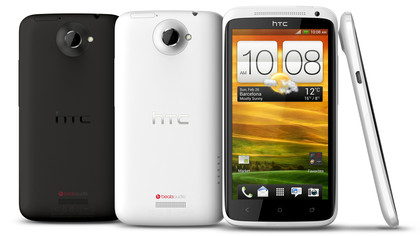
HTC One X
Date of launch: May 2012 | Dimensions: 134.4mm x 69.9mm x 8.9mm | Weight: 130g | Screen size: 4.7 inches, 720 x 1280 pixels | Launch OS: Android 4.0 Ice Cream Sandwich | CPU and RAM: Quad-core 1.5GHz, 1GB RAM | Camera: 8MP
HTC had now settled into a one-Android-flagship-phone-a-year pattern, and in 2012 the company's hopes were riding on the HTC One X. With a quad-core CPU working behind the scenes and 1GB of RAM, HTC was continuing the trend of pushing the limit in terms of internal specs.
Once again we found ourselves impressed with the IPS LCD display and the performance of the phone, which was taking on the likes of the Samsung Galaxy Nexus and Galaxy S3 at the time.
"Let's not beat around the bush here: we love the HTC One X," was the verdict we gave, but despite all that it had going for it, the HTC One X couldn't quite claw back the ground that the manufacturer was losing.
- Read our HTC One X review
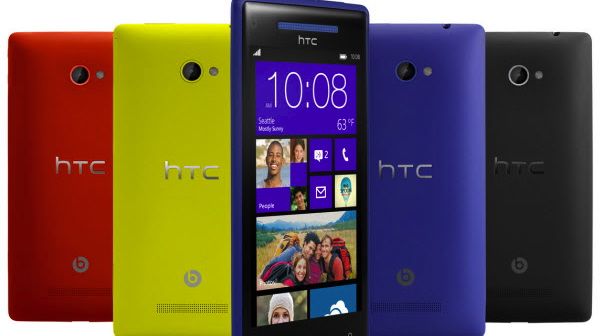
HTC Windows Phone 8X
Date of launch: November 2012 | Dimensions: 132.4 x 66.2 x 10.1mm | Weight: 130g | Screen size: 4.3 inches, 720 x 1280 pixels | Launch OS: Windows Phone 8 | CPU and RAM: Dual-core 1.5GHz, 1GB RAM | Camera: 8MP
One of only two Windows Phone 8 handsets launched by HTC, the Windows Phone 8X was its flagship, but only scored a three and a half-star review from us.
We praised its contact integration and 8MP camera, but the 8X fell down when it came to battery life and storage.
And while we were somewhat taken with the “elegant” design of Windows Phone 8, the world at large remained unconvinced, with Microsoft failing to shift many handsets running the OS.
And HTC wasn’t having much more luck with Android, with HTC’s US smartphone market share dropping from a high of 24% in 2011 to 11% in November 2012 according to comScore. And the launch of the 8X didn’t halt its decline – by February 2013 it was down to 9.3%.
- Read our Windows Phone 8X review
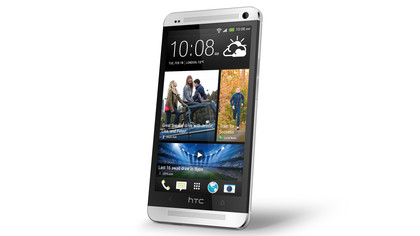
HTC One (M7)
Date of launch: March 2013 | Dimensions: 137.4mm x 68.2mm x 9.3mm | Weight: 143g | Screen size: 4.7 inches, 1080 x 1920 pixels | Launch OS: Android 4.1 Jelly Bean | CPU and RAM: Quad-core 1.7GHz processor, 2GB RAM | Camera: 4MP
It was a familiar story for HTC with its 2013 flagship: despite getting some rave reviews from the technology press, the HTC One (M7) struggled to make an impact in terms of actual sales.
We liked it so much we gave it a five-star review, praising the phone's "wow-factor" design, Sense version of Android and low-light camera performance.
Long after its launch, the 4.7-inch full HD display, quad-core chipset and smooth metal chassis was still putting many handsets to shame.
Despite all of these plus points, the HTC One never really took off in the face of fierce competition from the Galaxy S4 and the significantly cheaper Nexus 4. HTC would have happily swapped one or two 'Phone of 2013' awards for a few more millions in sales.
- Read our HTC One (M7) review
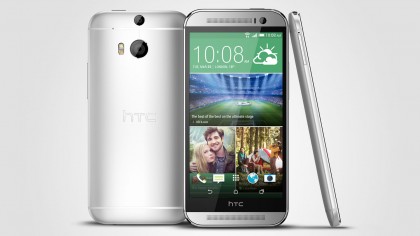
HTC One (M8)
Date of launch: March 2014 | Dimensions: 146mm x 70.5mm x 9.5mm | Weight: 160g | Screen size: 5 inches, 1080 x 1920 pixels | Launch OS: Android 4.4.2 KitKat | CPU and RAM: Quad-core 2.3GHz processor, 2GB RAM | Camera: 4MP Ultrapixel Duo
The HTC One (M7) may not have been a sales success, but it was such a hit with critics that HTC decided to build on that phone for the HTC One (M8), rather than going back to the drawing board.
The result was a larger, more powerful handset, with an even more beautiful design. In short everything we liked about the HTC One (M7) was here again, only better.
An innovative new Duo camera improved its photography skills and the addition of a microSD card slot addressed one of the key criticisms of the HTC One (M7). This all led to another five-star review from us and the conclusion that the HTC One (M8) "really impresses at nearly every turn."
The phone didn't bring much new to the table, but it was polished to near perfection and this paid off for the Taiwanese firm, with the HTC One (M8) making the company profitable again.
- Read our HTC One (M8) review
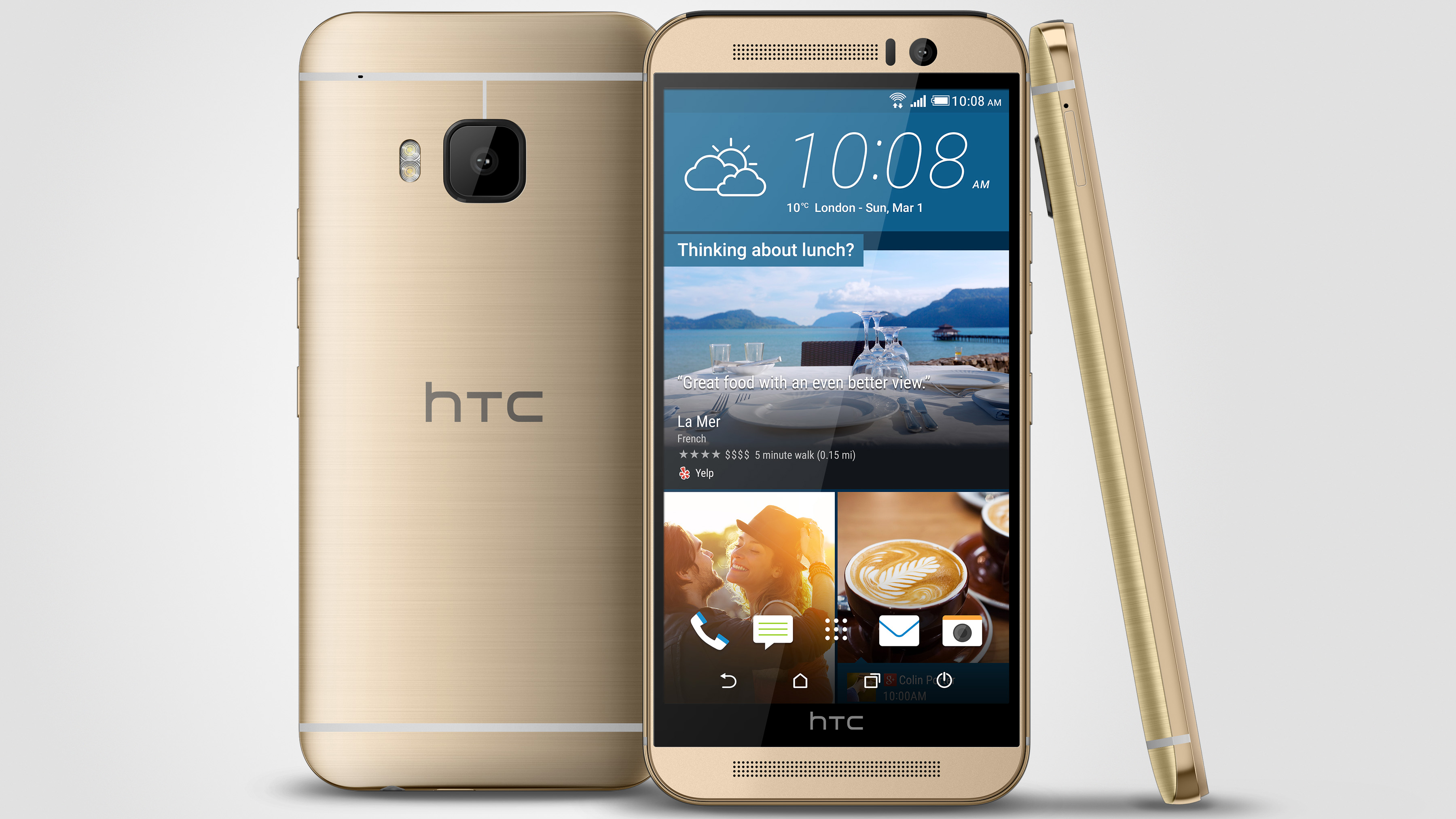
HTC One M9
Date of launch: March 2015 | Dimensions: 144.6mm x 69.7mm x 9.6mm | Weight: 157g | Screen size: 5 inches, 1080 x 1920 pixels | Launch OS: Android 5.0 Lollipop | CPU and RAM: Octa-core 2.0GHz processor, 3GB RAM | Camera: 20MP
There are only so many times you can repeat the same trick before it becomes stale, as HTC learned with the One M9, with which it once again tried to build on what had gone before, but found there was nowhere left to go.
Which isn't to say that the HTC One M9 was a bad phone, far from it, as our four-star review attests. It had an incredible design and its 20MP camera was a definite step up from the Ultrapixel snappers HTC had been peddling previously.
But battery troubles and a general sense that this was a conservative upgrade held it back, with our review concluding that "this year we've just got a good phone - a pretty darn good one - but not brilliant."
Unsurprisingly this led to lacklustre sales, especially in the face of the Samsung Galaxy S6, which sported a new design that could almost rival the M9's. April should have been a big month for HTC, with its flagship newly available, but in fact the company recorded its worst April quarter in six years.
- Read our HTC One M9 review

HTC 10
Date of launch: May 2016 | Dimensions: 145.9 x 71.9 x 3.0 - 9.0mm | Weight: 161g | Screen size: 5.2 inches, 1440 x 2560 pixels | Launch OS: Android 6.0 Marshmallow | CPU and RAM: Quad-core 2.2GHz, 4GB RAM | Camera: 12MP
After the disappointment of the HTC One M9 there was a lot riding on the HTC 10, but it was a very different beast to 2015's flagship.
Everything seemed to have been improved, from upping the size and resolution of the screen, to equipping it with a powerful Snapdragon 820 chipset and 4GB of RAM.
The metal unibody looked as stunning as expected and as well as improvements the HTC 10 included new and changed features, like a fingerprint scanner, Hi-Res audio, solid battery life and a refined interface, that better fitted with Google's Material Design.
It was one of HTC's best phones in years, though camera and audio issues meant we stopped short of giving it five stars.
- Read our HTC 10 review

HTC U Ultra
Date of launch: February 2017 | Dimensions: 162.4 x 79.8 x 8mm | Weight: 170g | Screen size: 5.7 inches, 1440 x 2560 pixels | Launch OS: Android 7.0 Nougat | CPU and RAM: Quad-core 2.15GHz, 4GB RAM | Camera: 12MP
HTC’s early 2017 flagship, the HTC U Ultra failed to impress. It had a great QHD screen and an attractive design, but other than a secondary display above the main one it brought little new to the table, with a lot of repackaged tech and a high price.
The phone struggled to stand out even from 2017’s flagships, let alone the likes of the Samsung Galaxy S8, which was announced shortly after it.
Fortunately, as we now know, it wasn’t HTC’s main 2017 flagship, but with the HTC U11 likely to cannibalize many of the U Ultra’s sales the phone’s existence seems even more questionable.
- Read our HTC U Ultra review
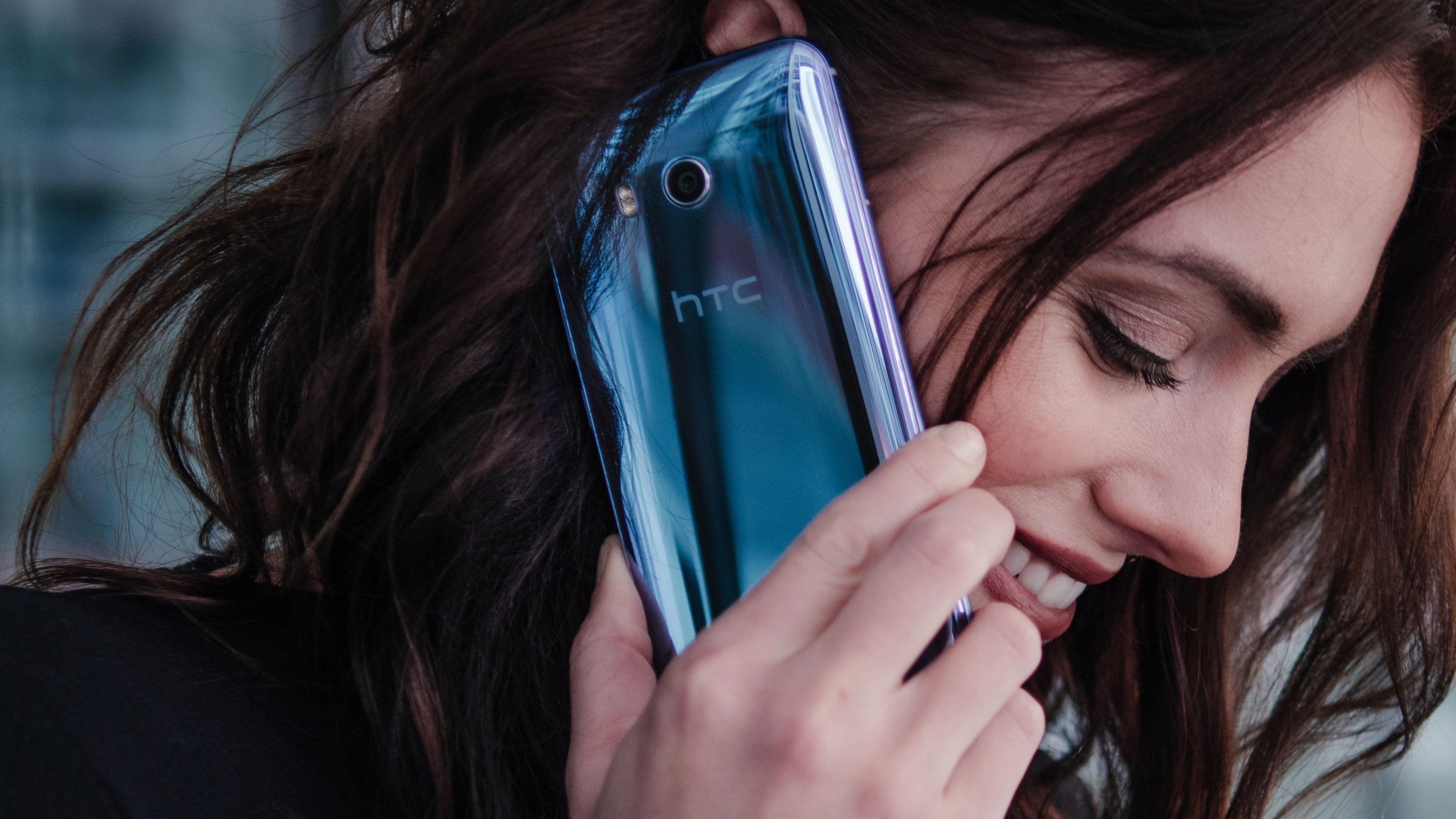
HTC U11
Date of launch: May 2017 | Dimensions: 153.9 x 75.9 x 7.9mm | Weight: 169g | Screen size: 5.5 inches, 1440 x 2560 pixels | Launch OS: Android 7 Nougat | CPU and RAM: Octa-core Snapdragon 835, 4GB/6GB RAM | Camera: 12MP
That brings us to now and HTC’s latest flagship, the HTC U11. Packed full of tech, the HTC U11 has a powerful Snapdragon 835 chipset and up to 6GB of RAM, giving it the grunt to compete with the big-hitters of 2017.
It also has typically brilliant audio, helped by the superb bundled U Sonic headphones, plus a QHD screen and Amazon’s Alexa assistant built in.
The lack of a headphone jack and a worryingly small battery could hold it back, while the headline Edge Sense feature which lets you interact with the phone by squeezing the sides seems somewhat flawed in our early tests, but the U11 overall seems like it might be a more well-rounded phone than the U Ultra.
Whether that will be enough for HTC to win back some market share remains to be seen.
- Read our HTC U11 review

Dave is a freelance tech journalist who has been writing about gadgets, apps and the web for more than two decades. Based out of Stockport, England, on TechRadar you'll find him covering news, features and reviews, particularly for phones, tablets and wearables. Working to ensure our breaking news coverage is the best in the business over weekends, David also has bylines at Gizmodo, T3, PopSci and a few other places besides, as well as being many years editing the likes of PC Explorer and The Hardware Handbook.